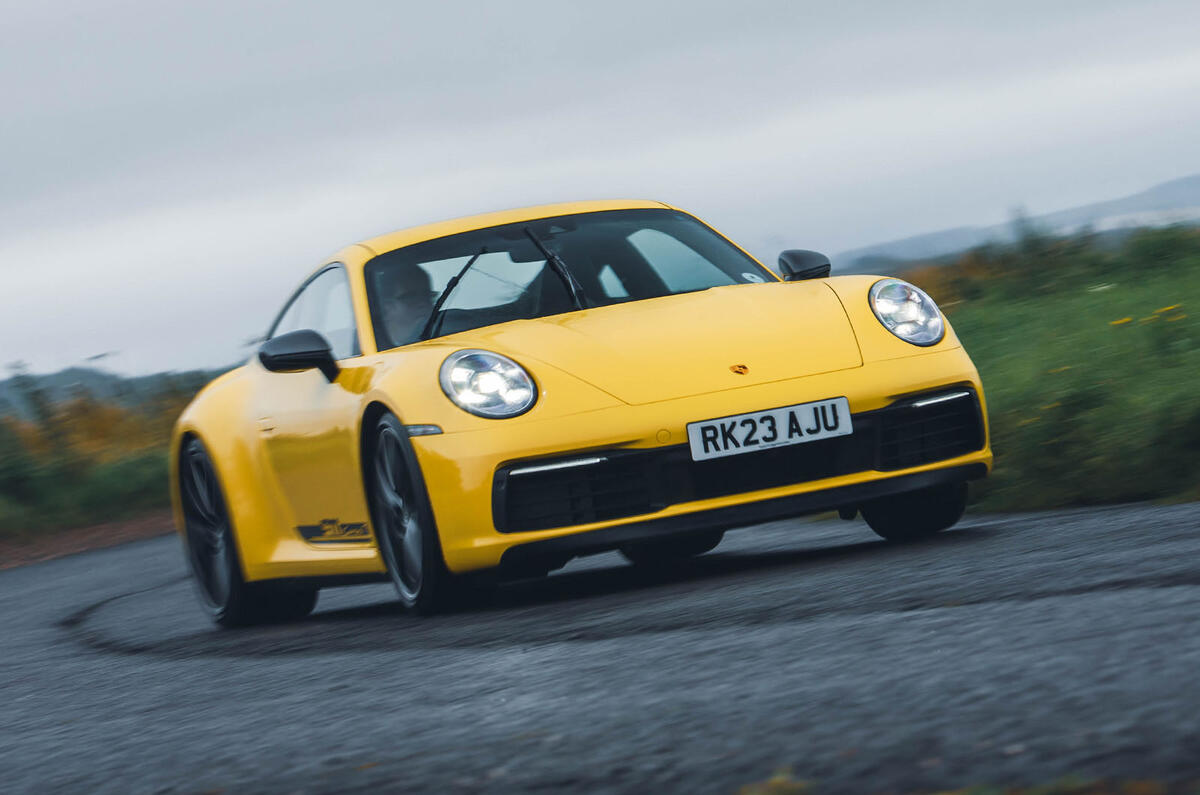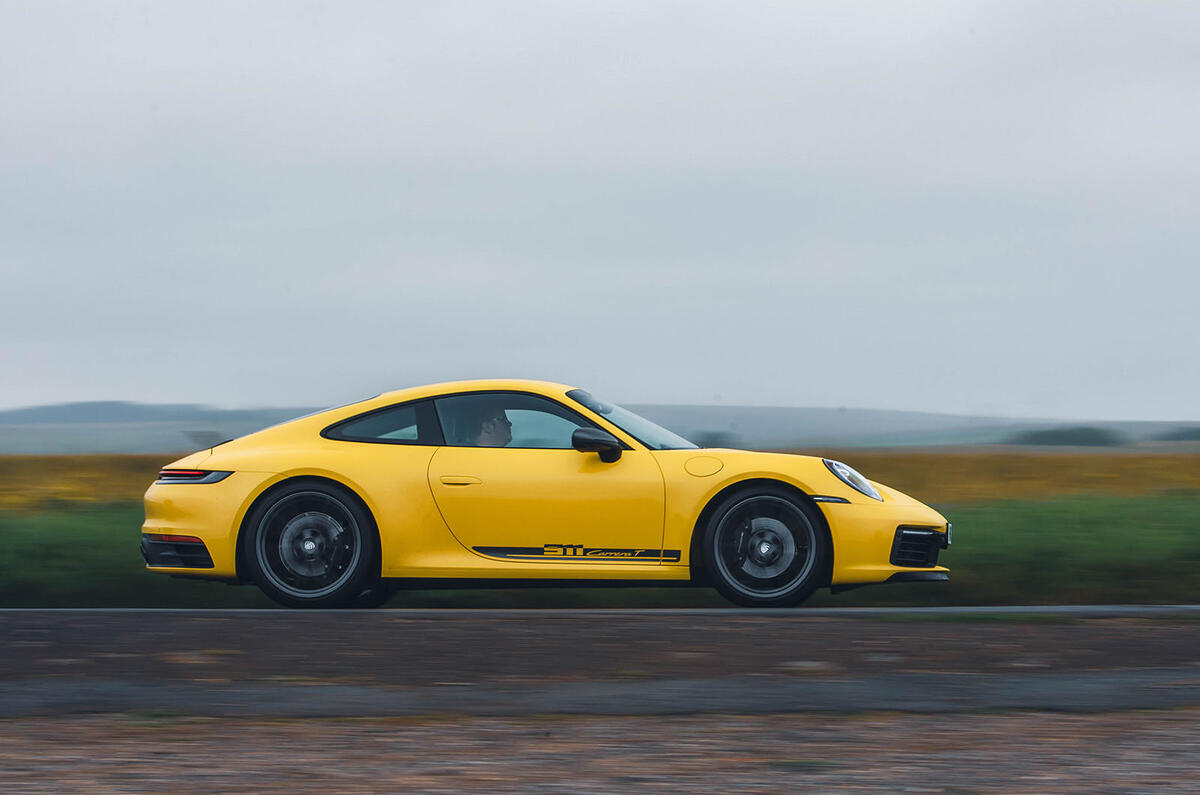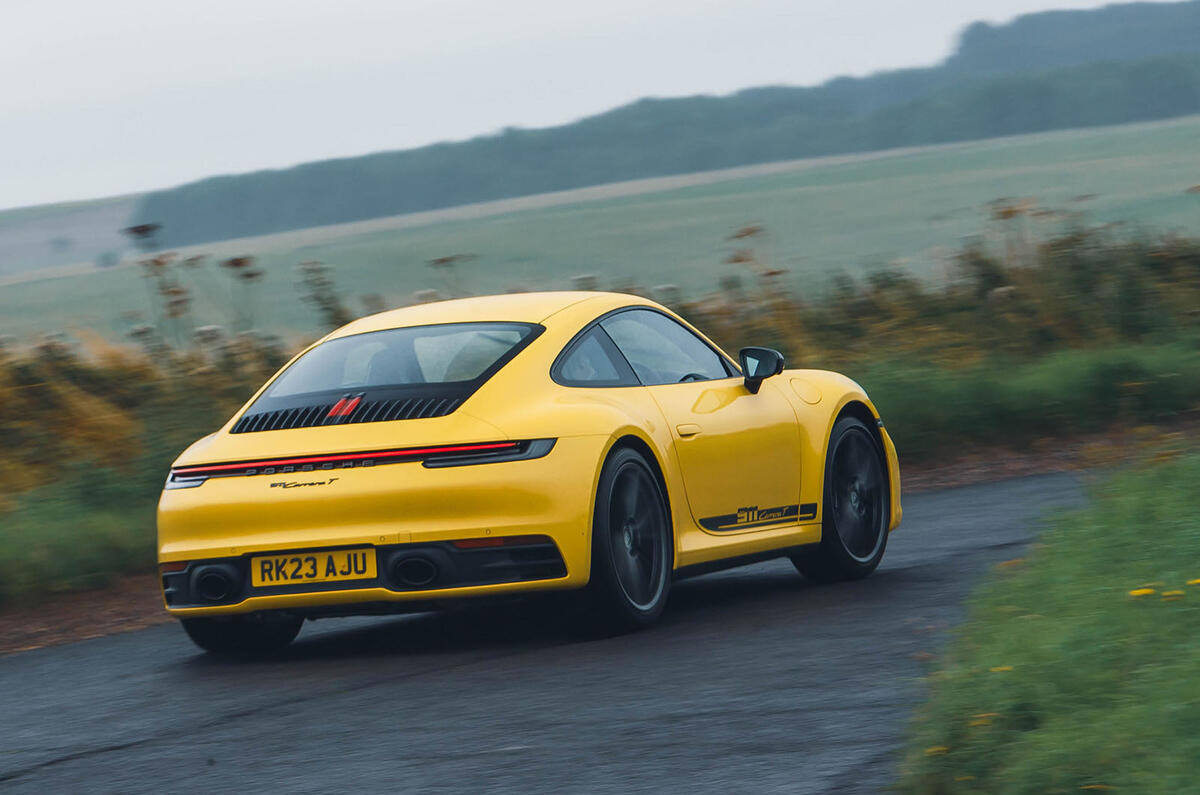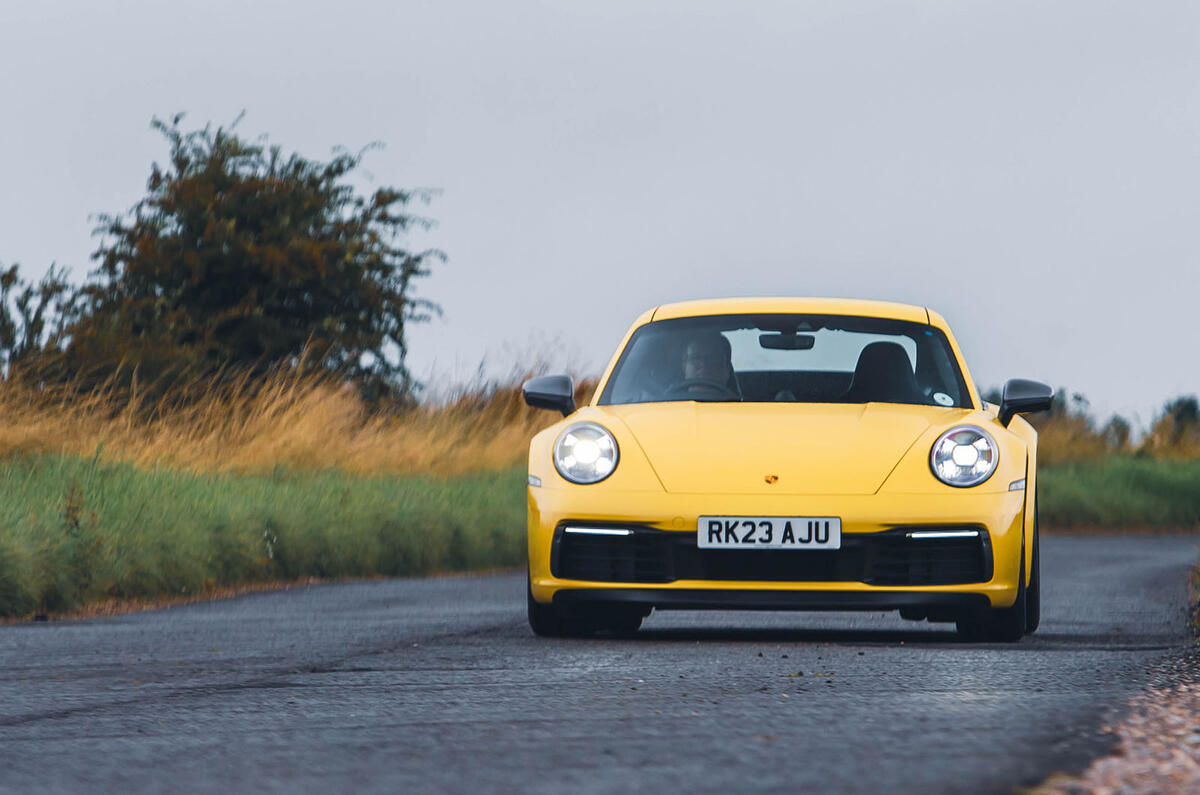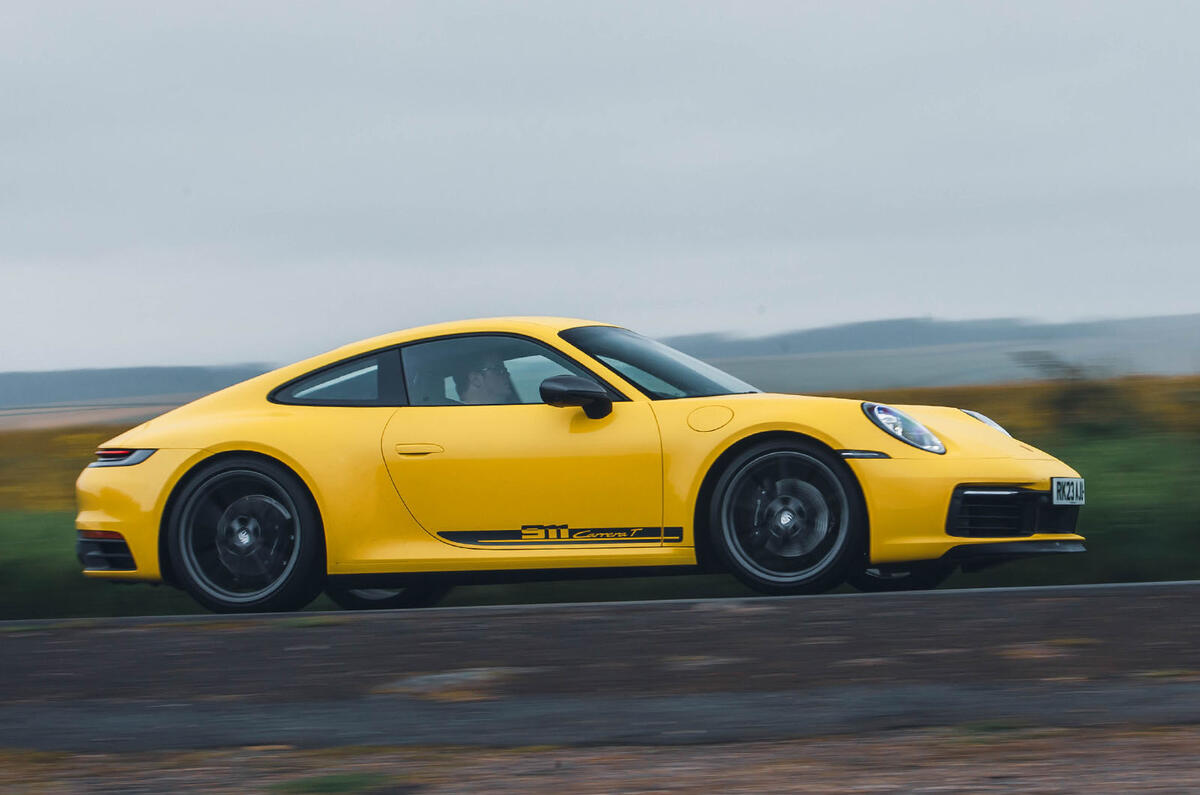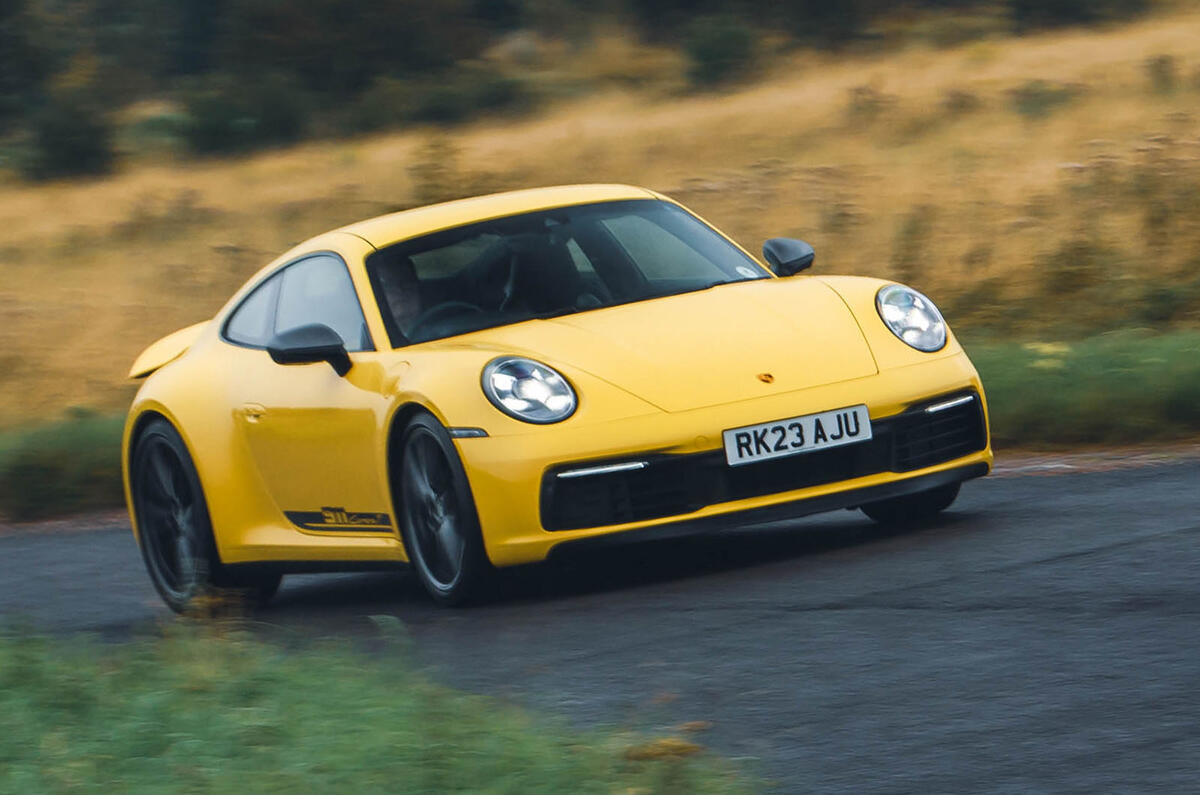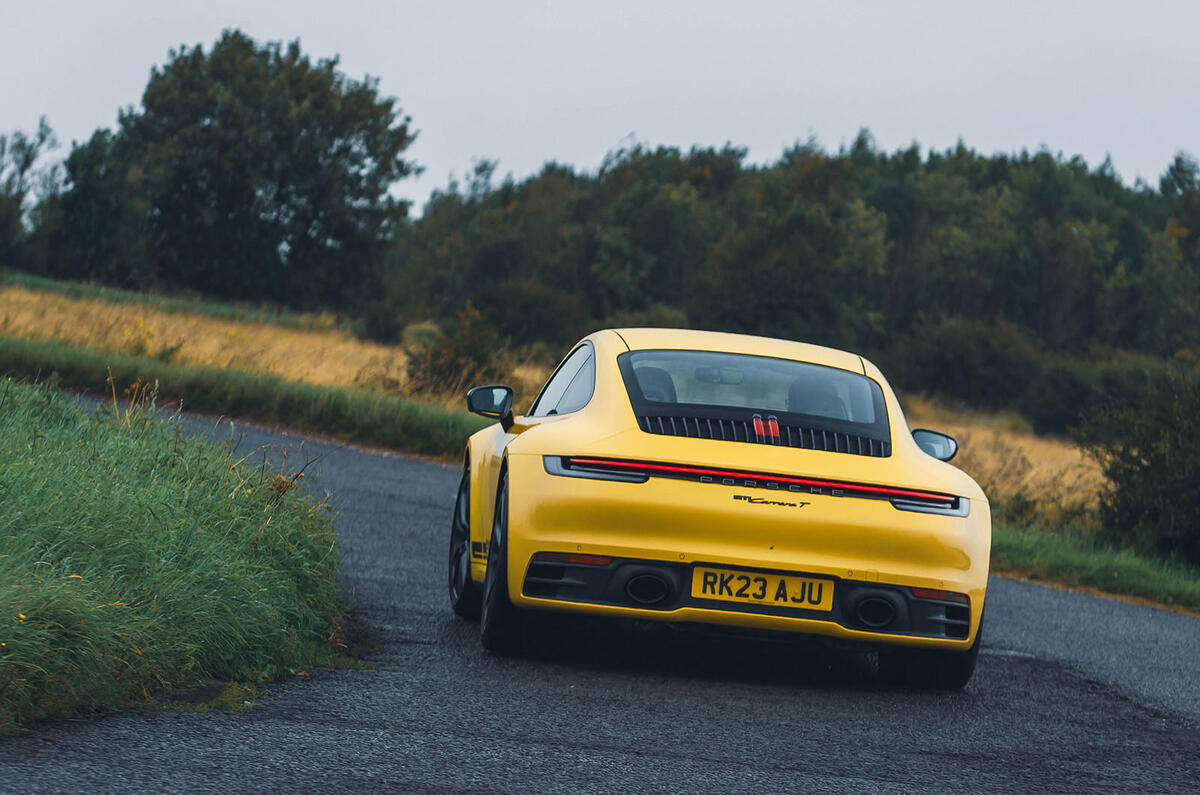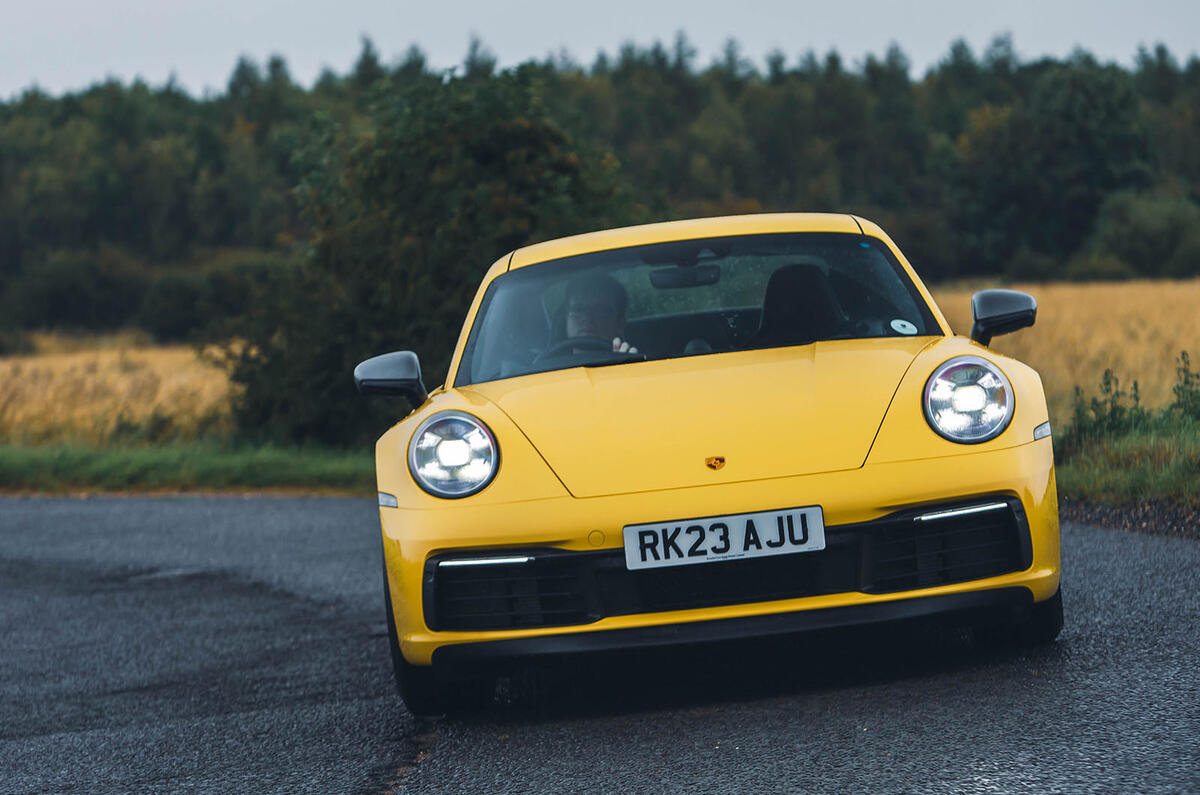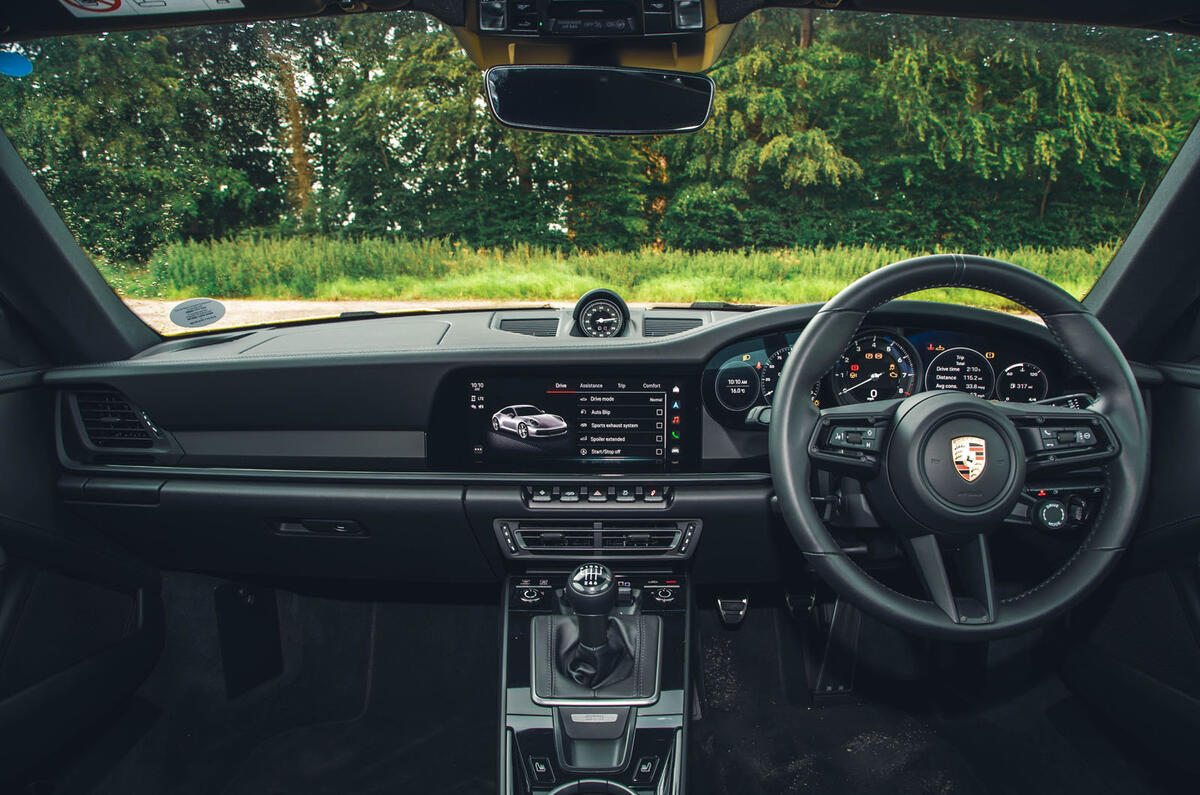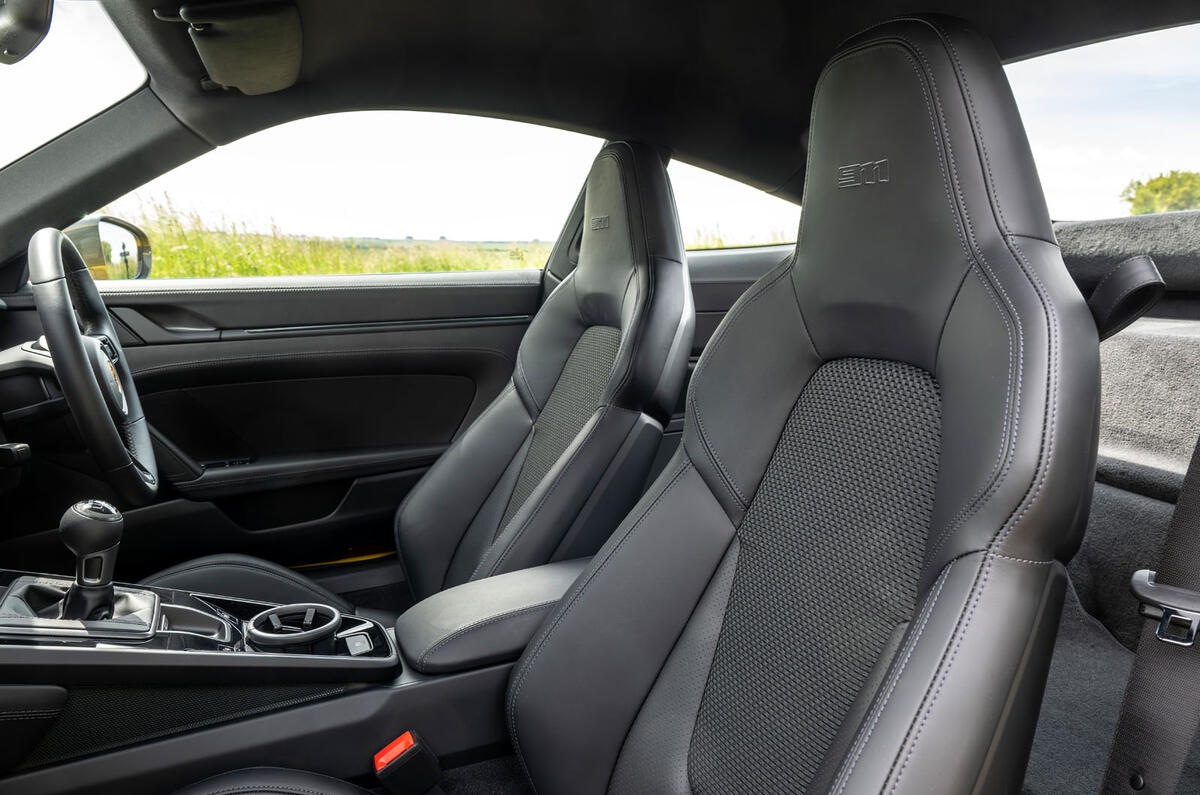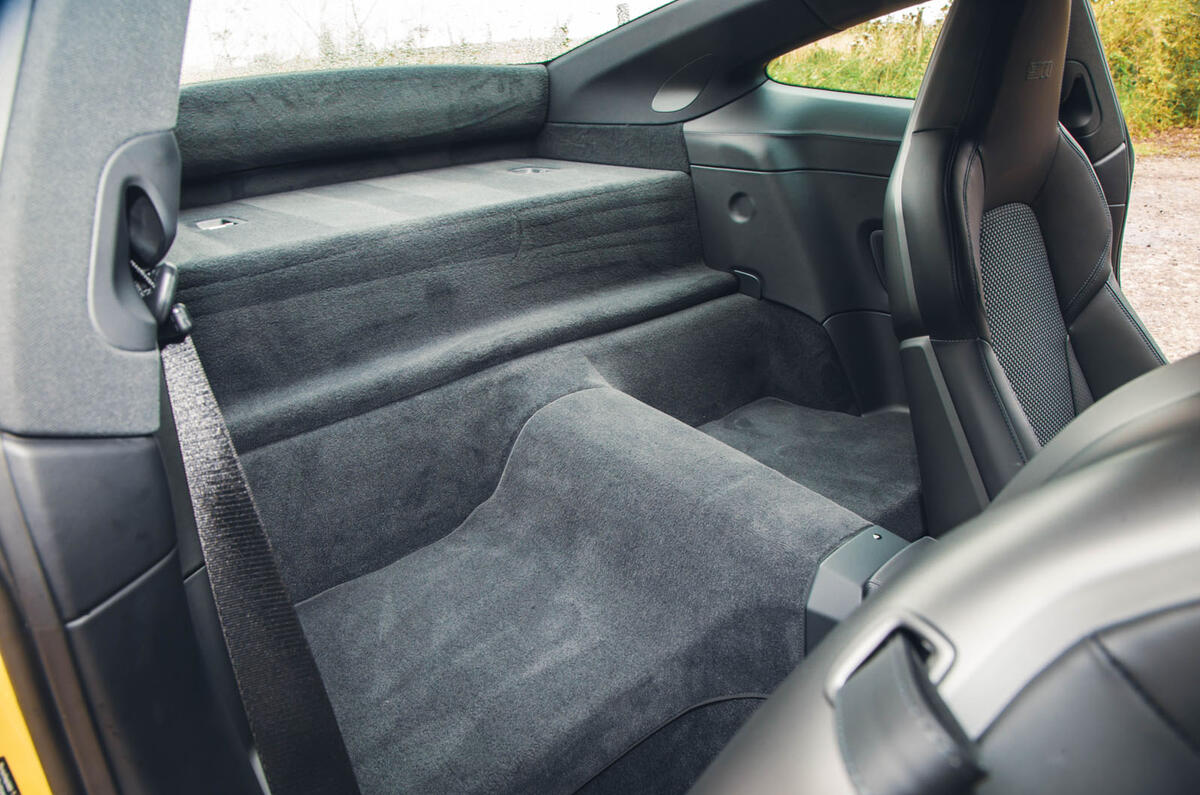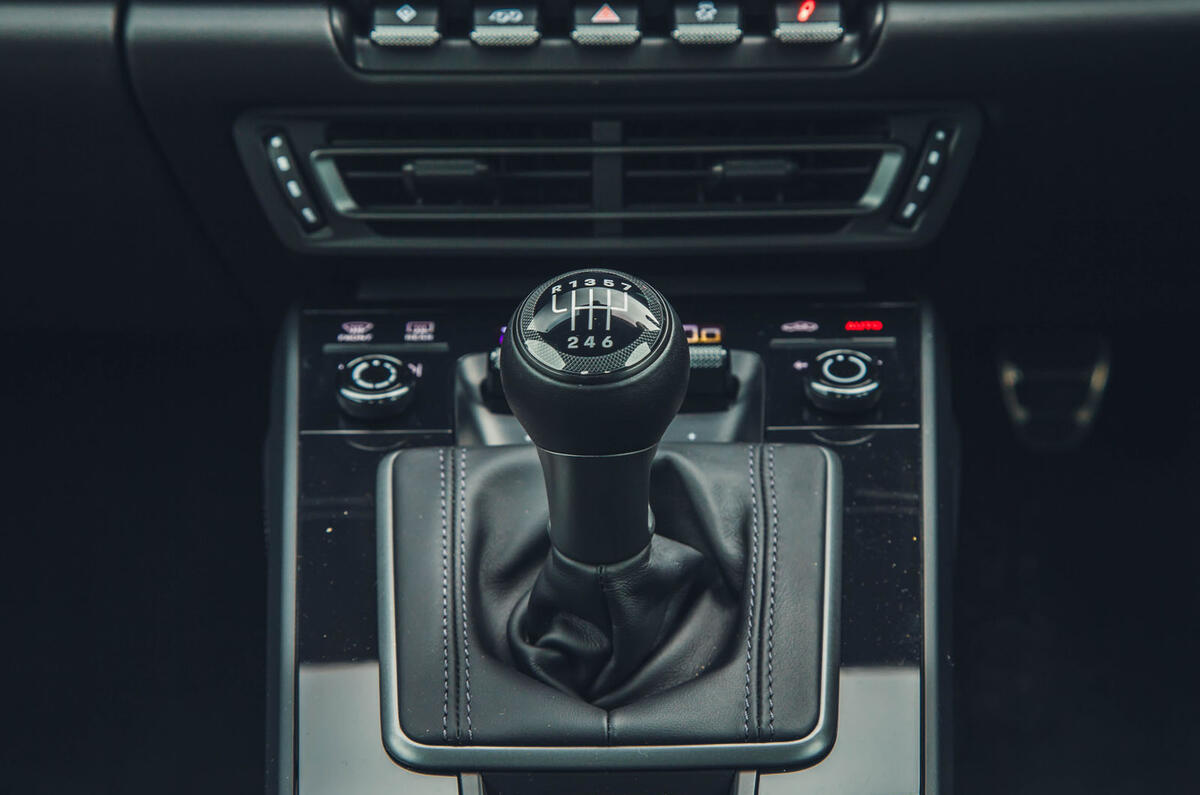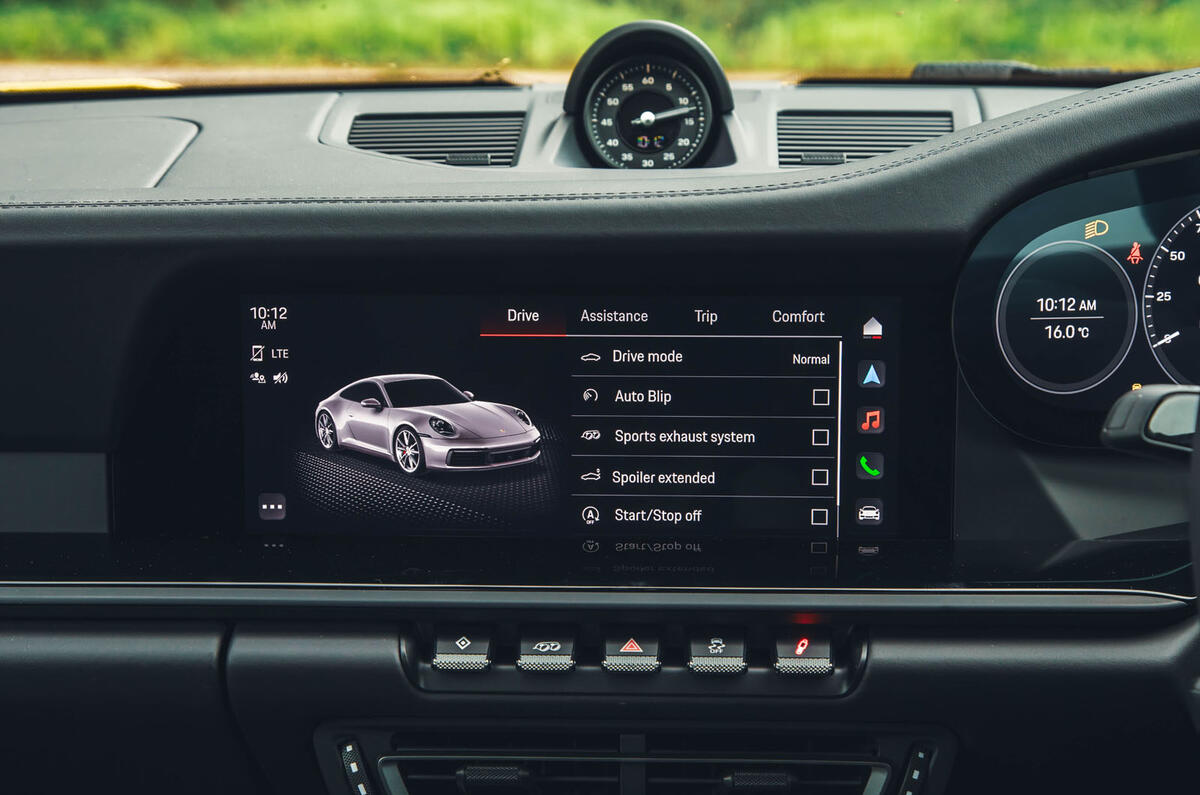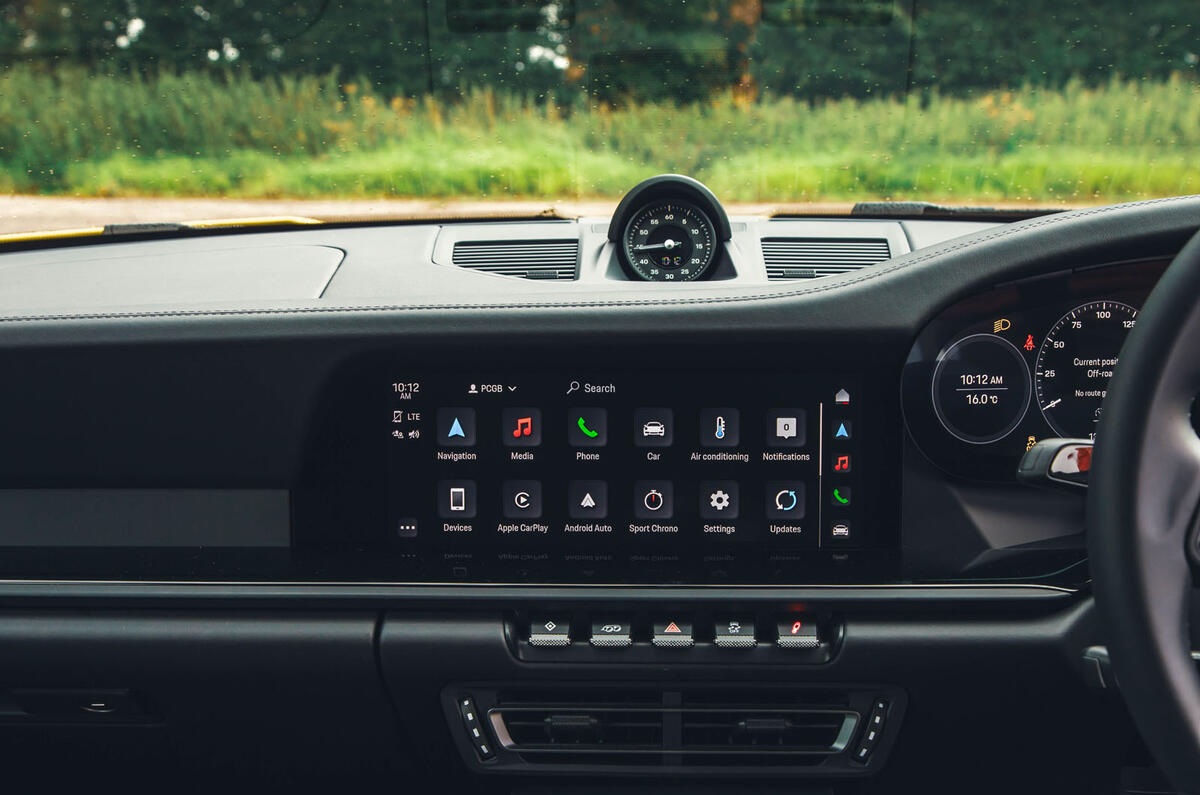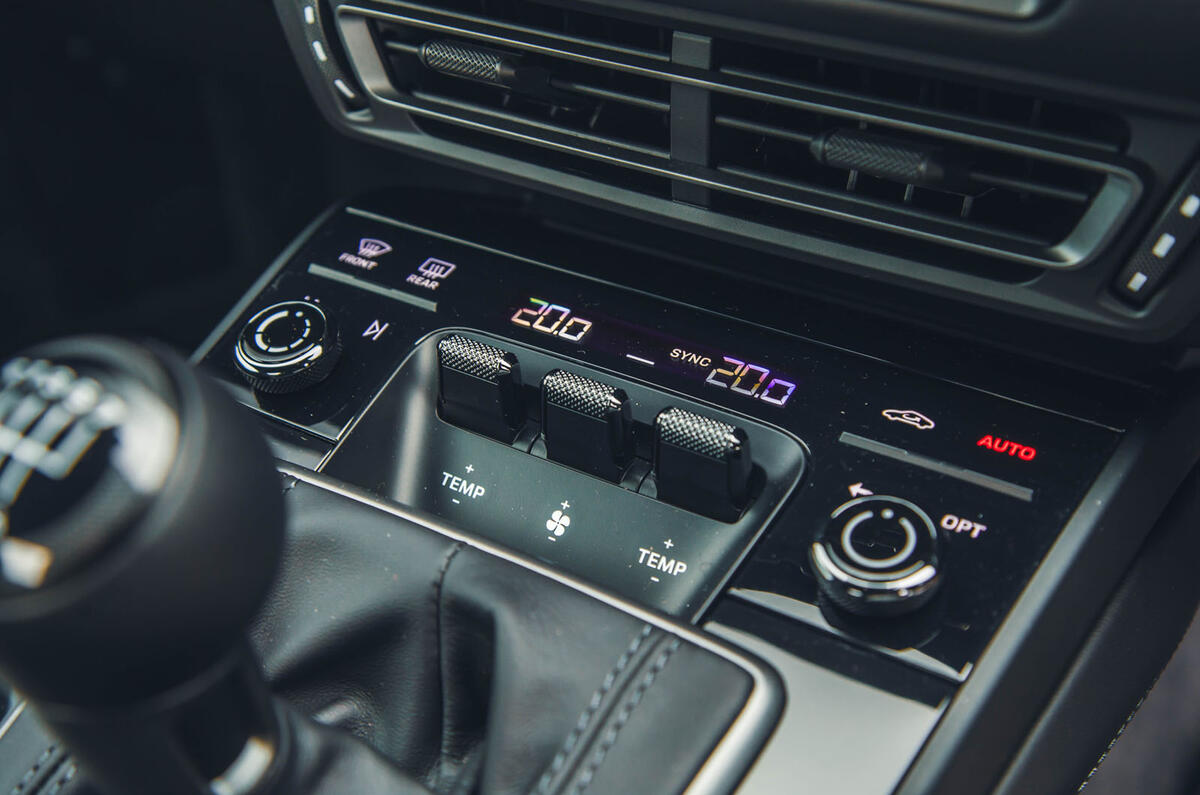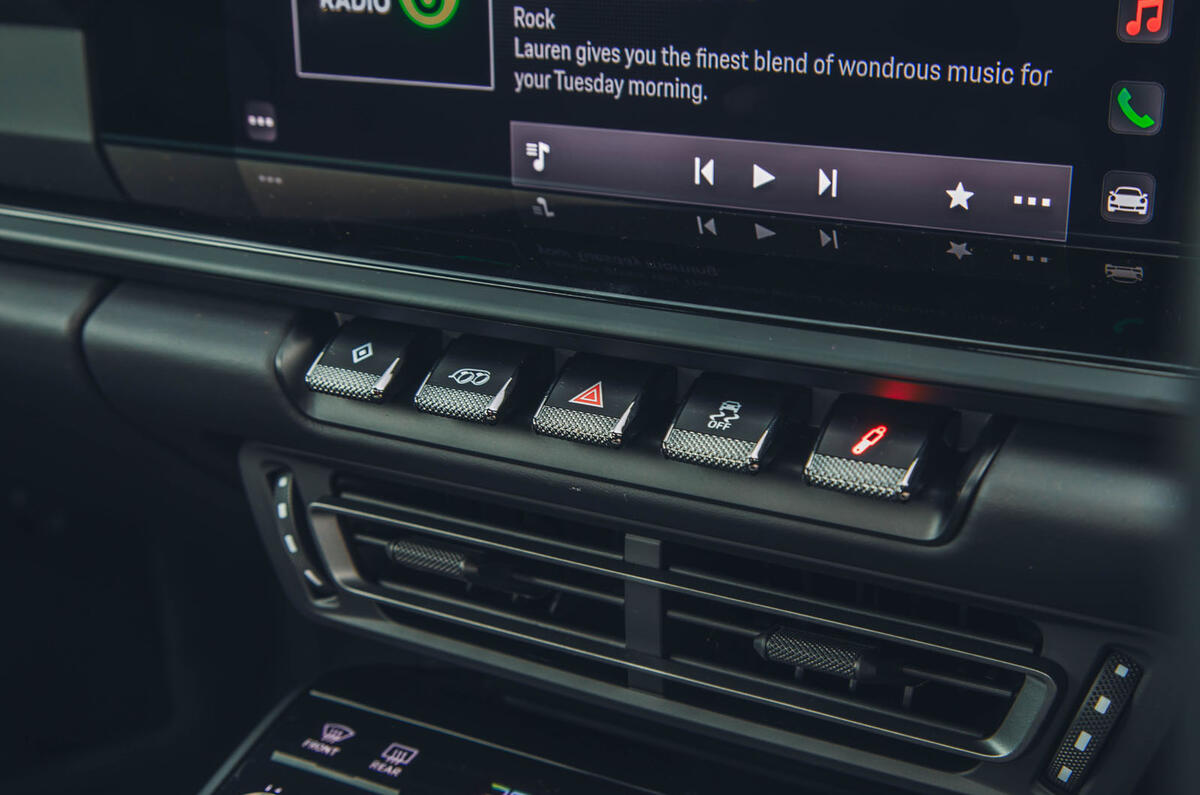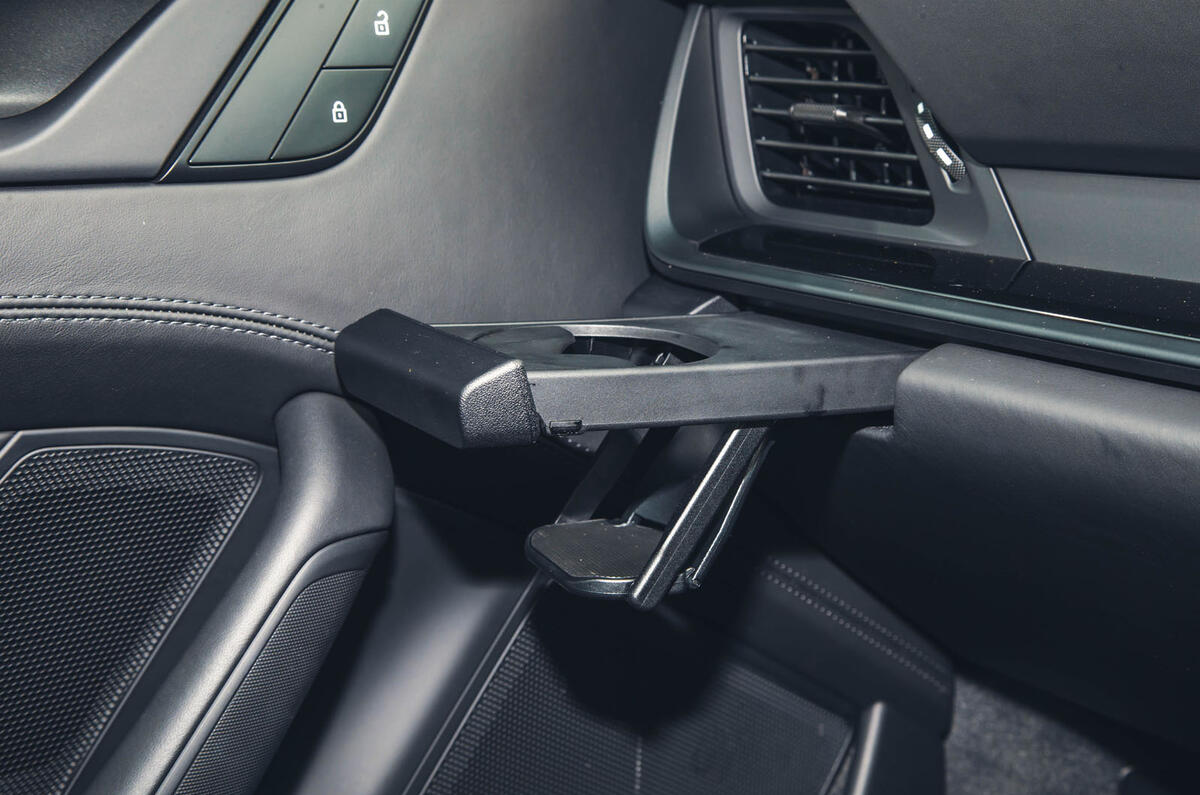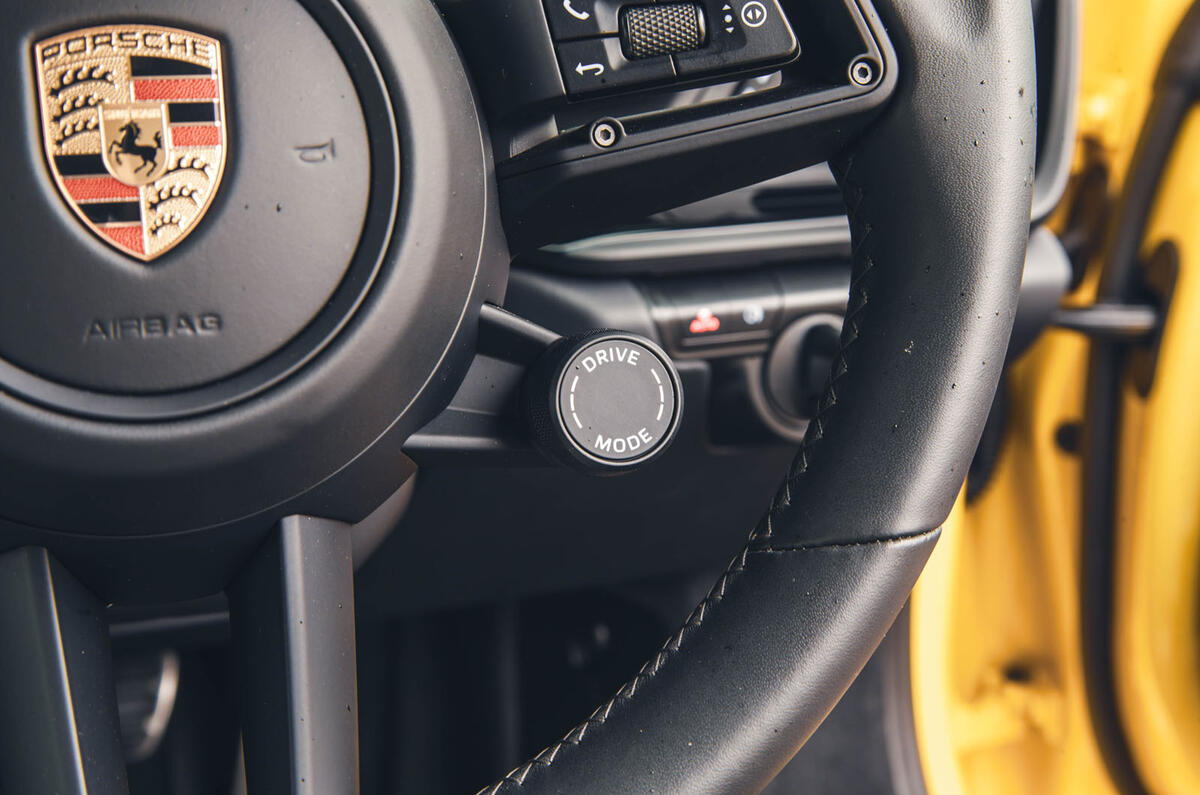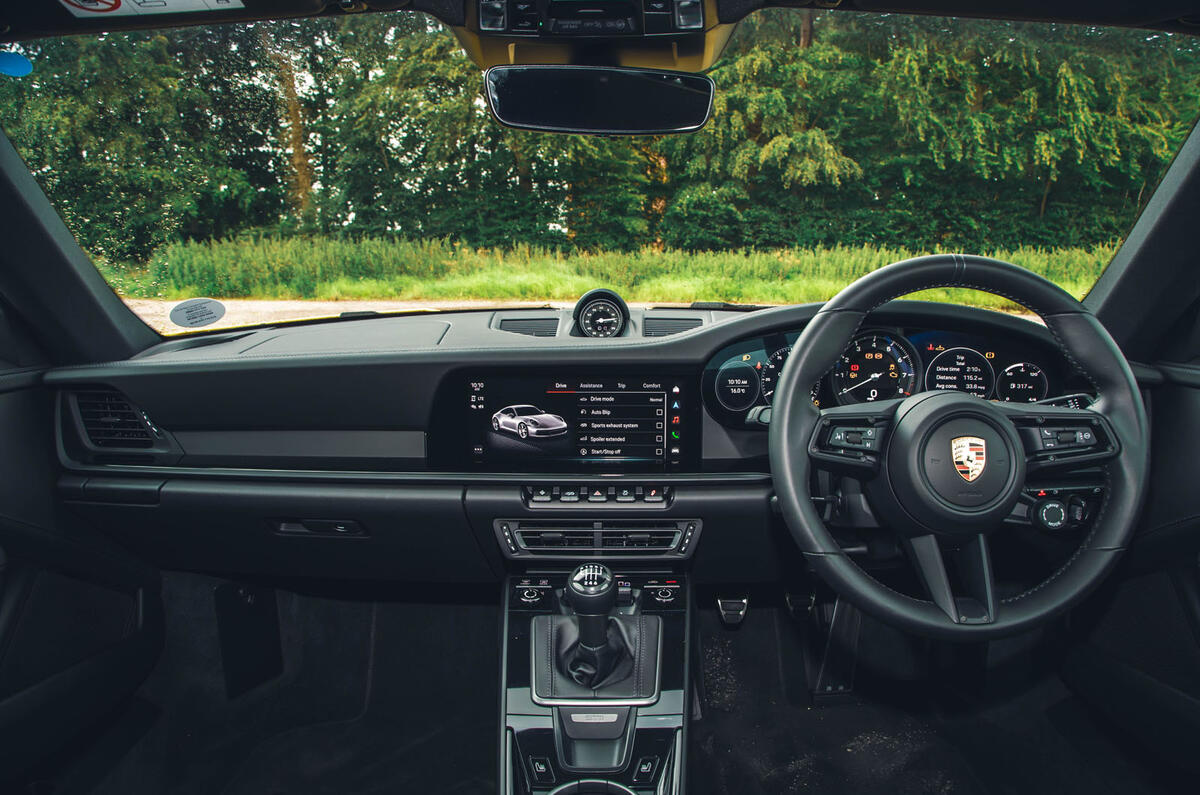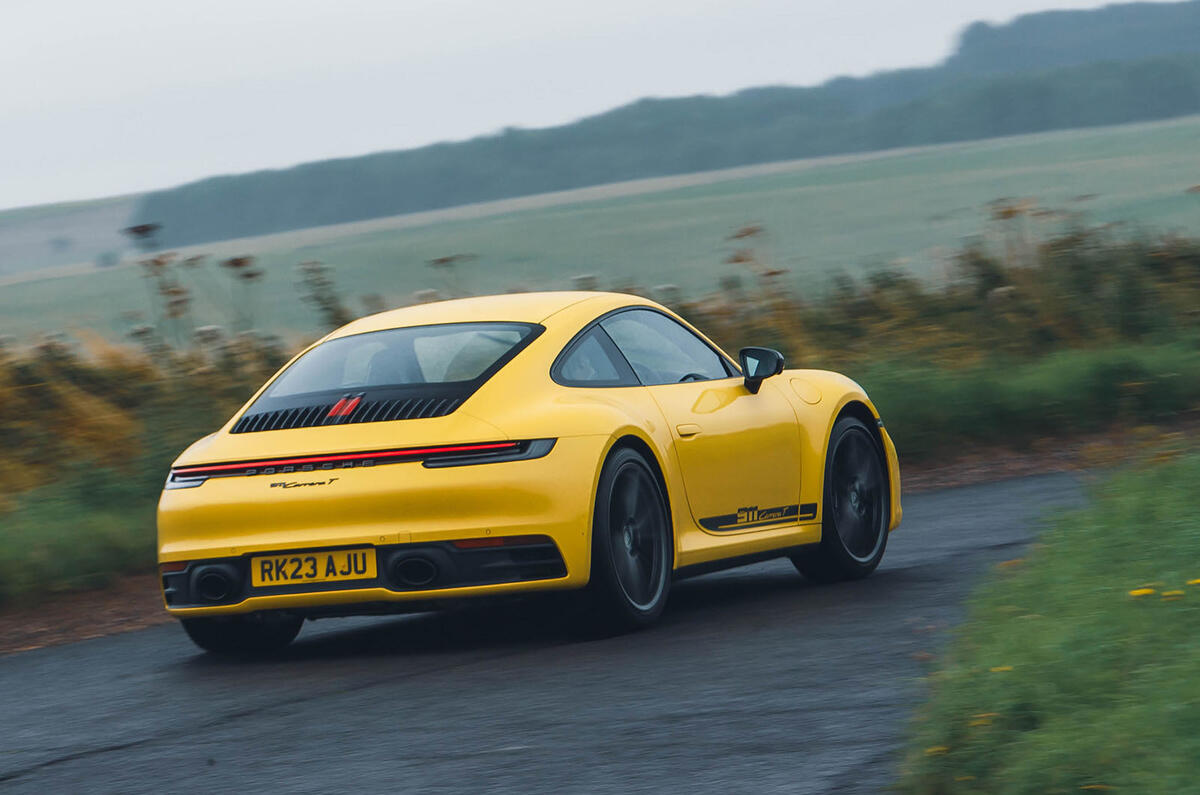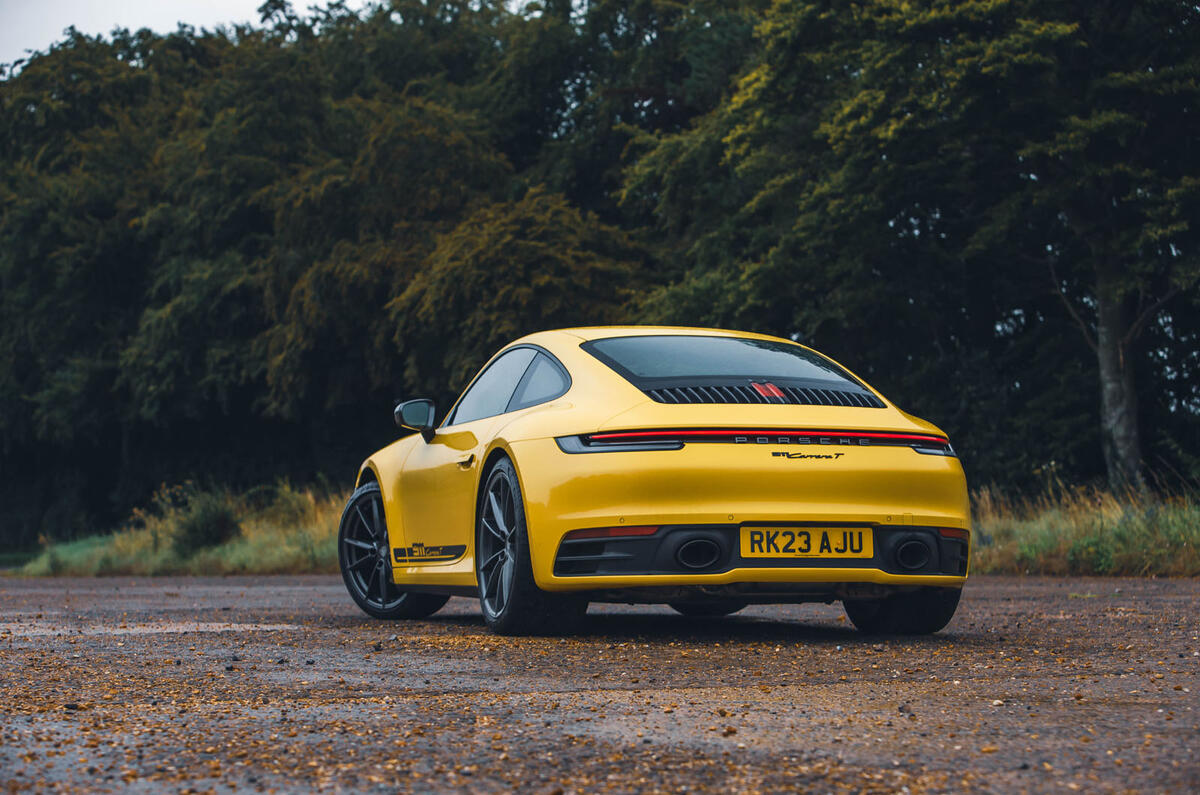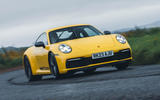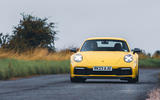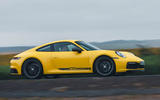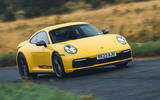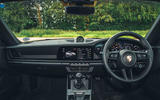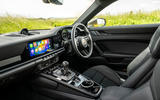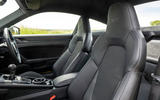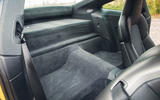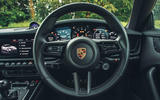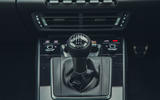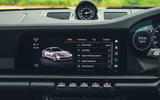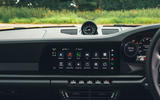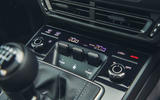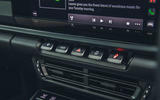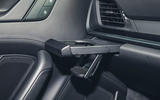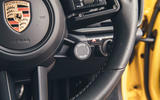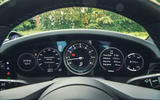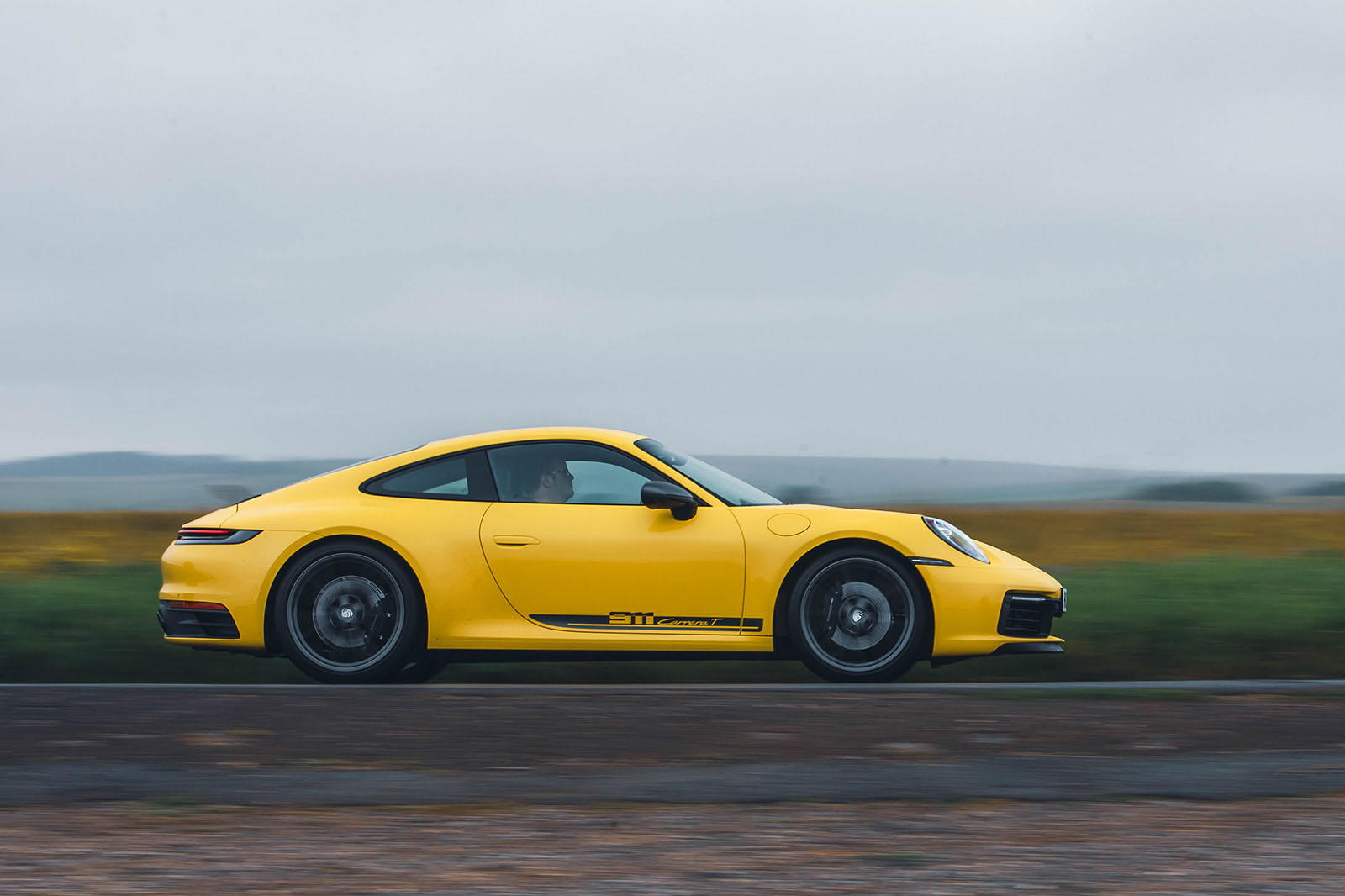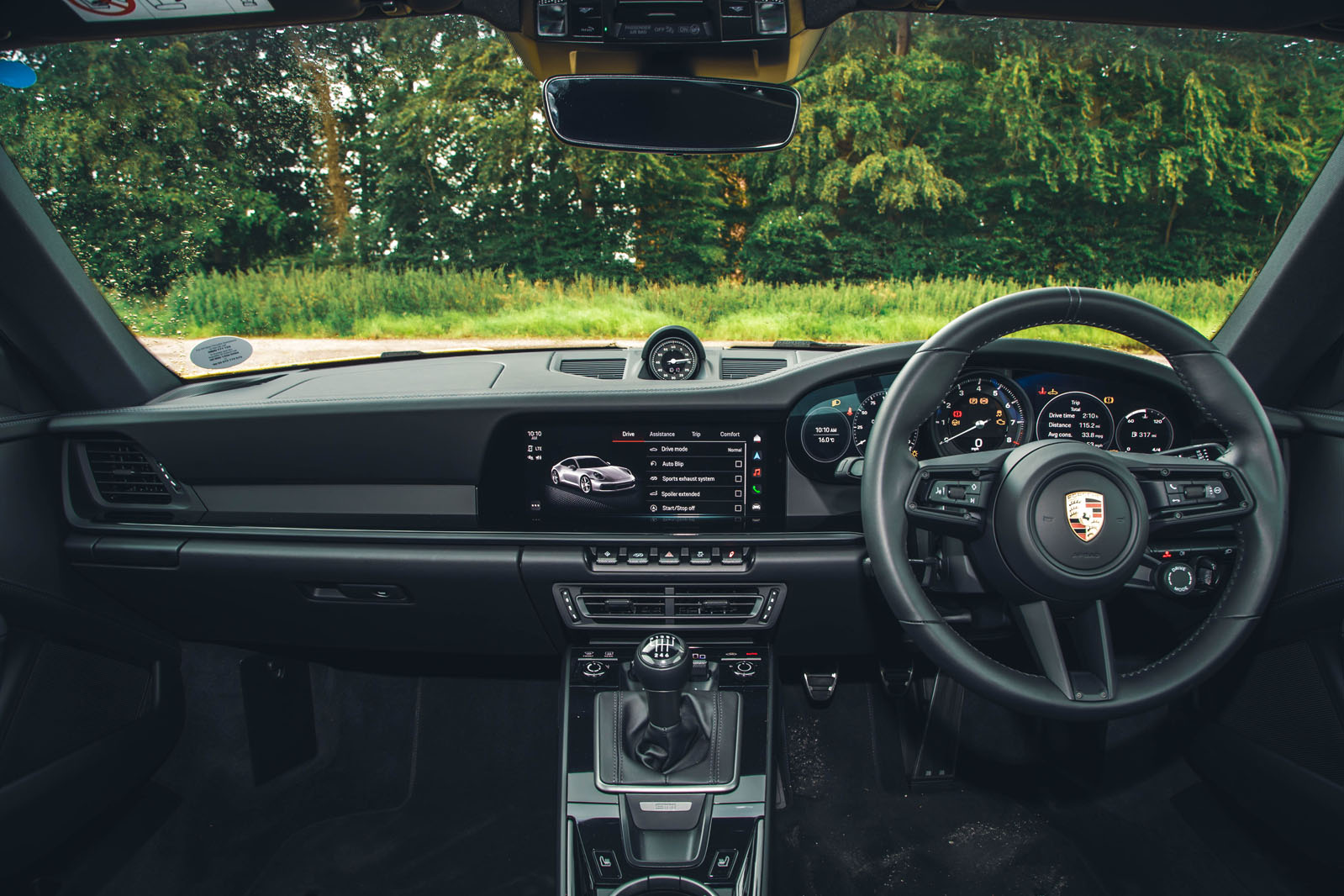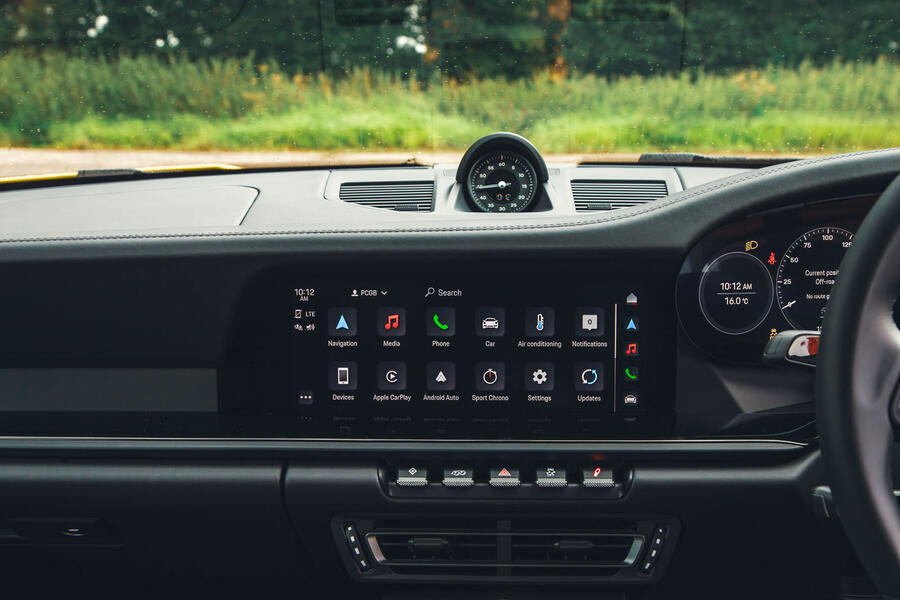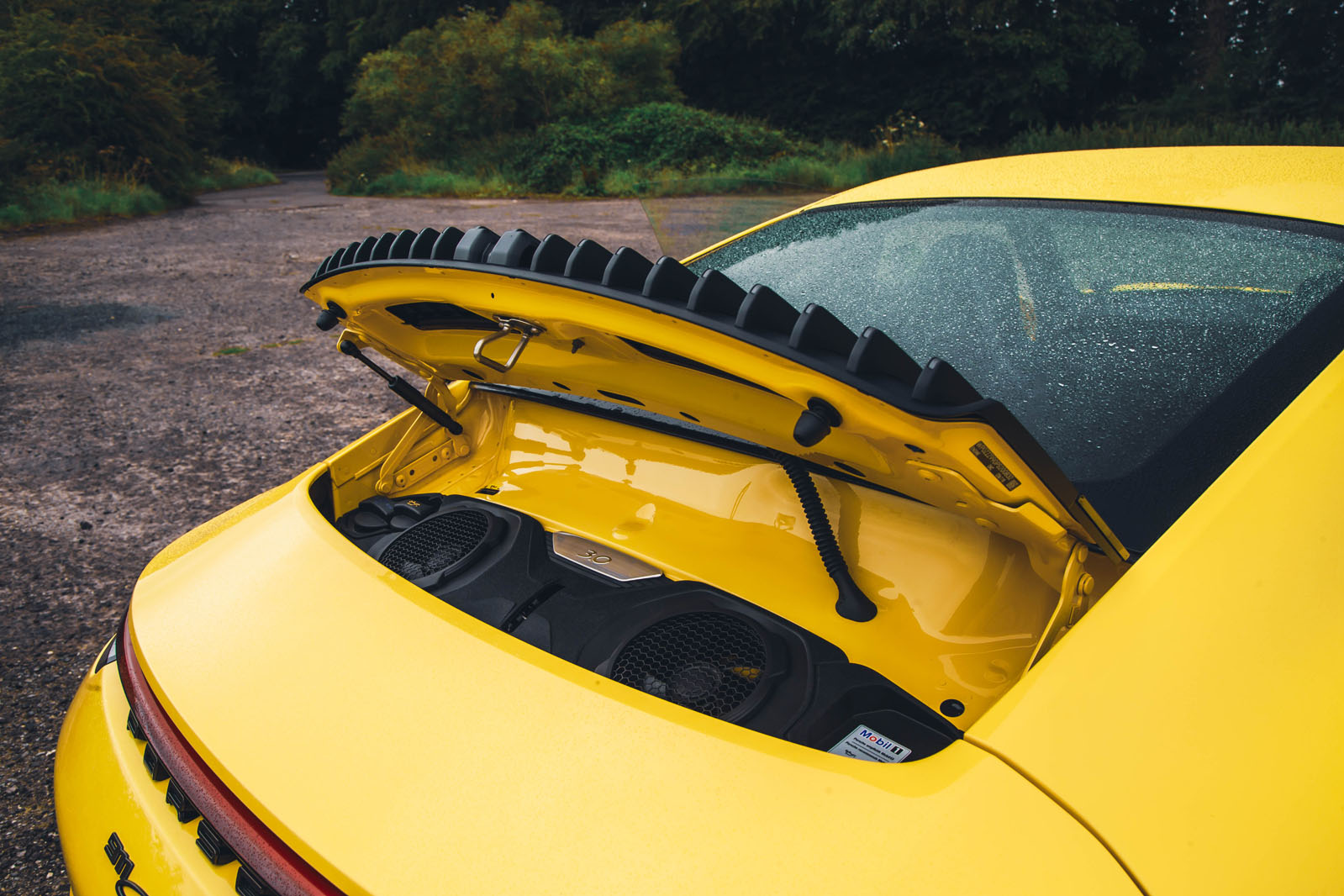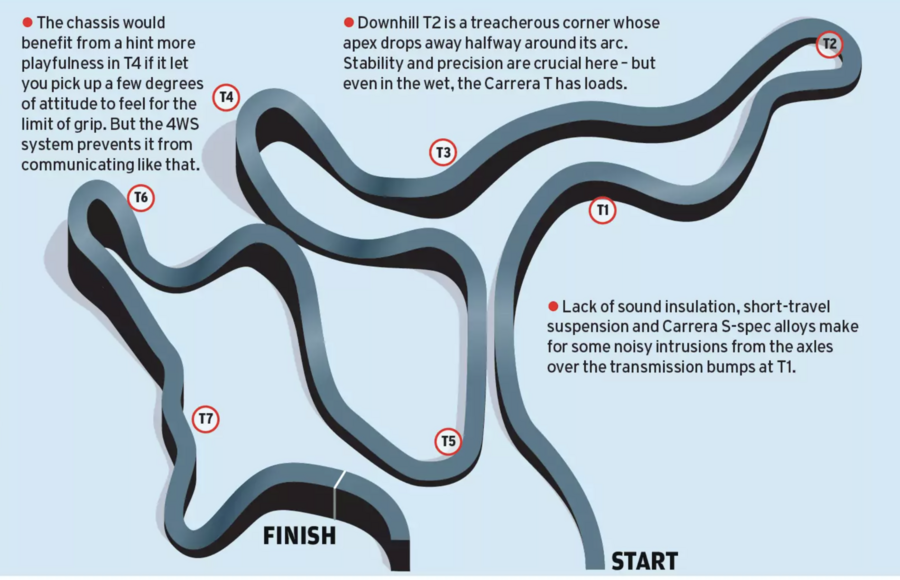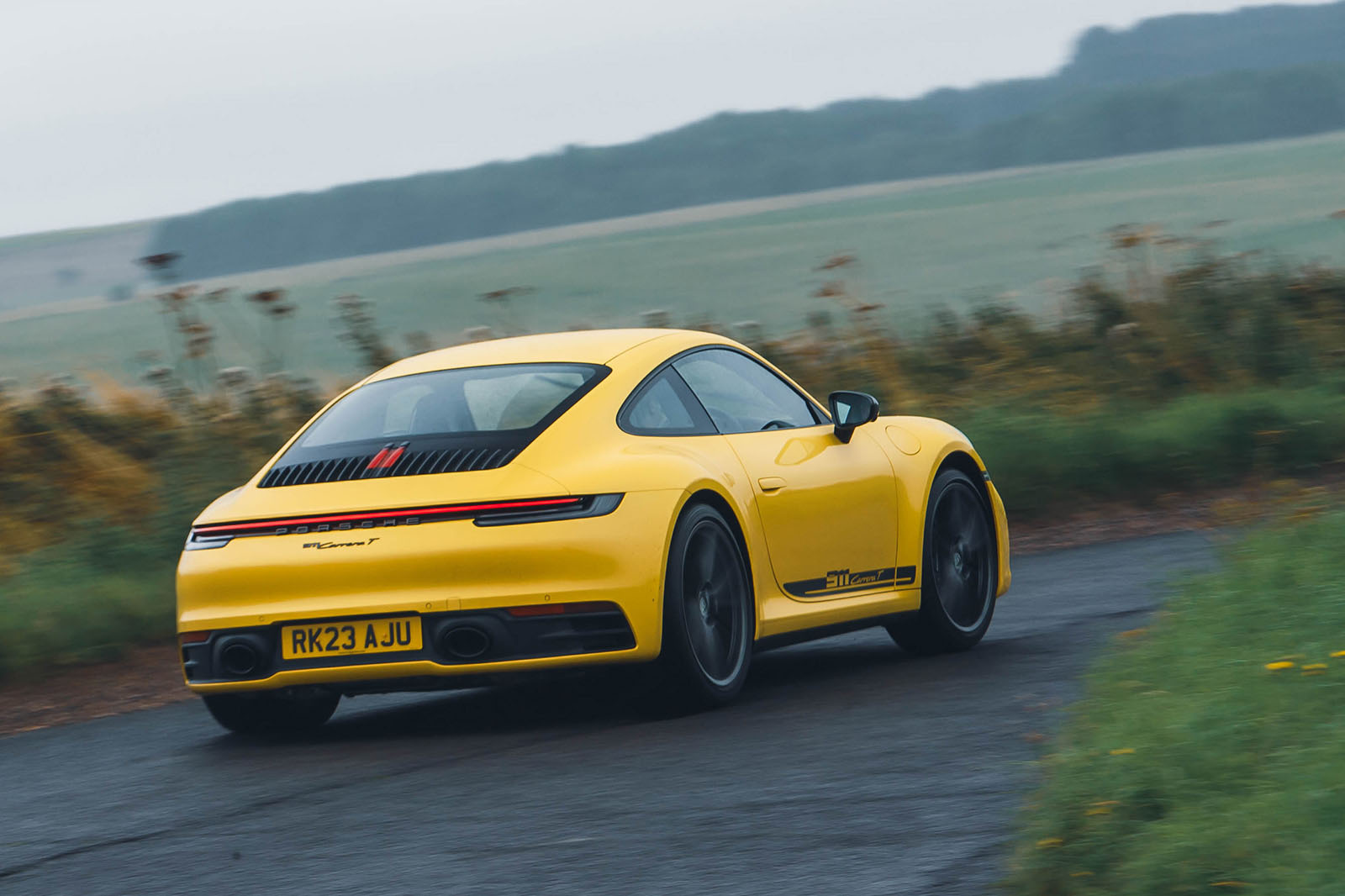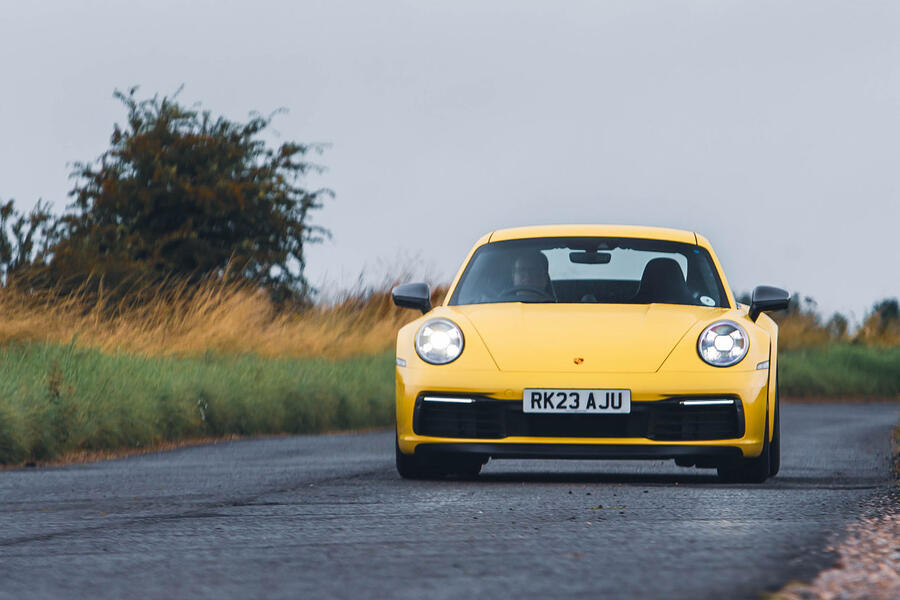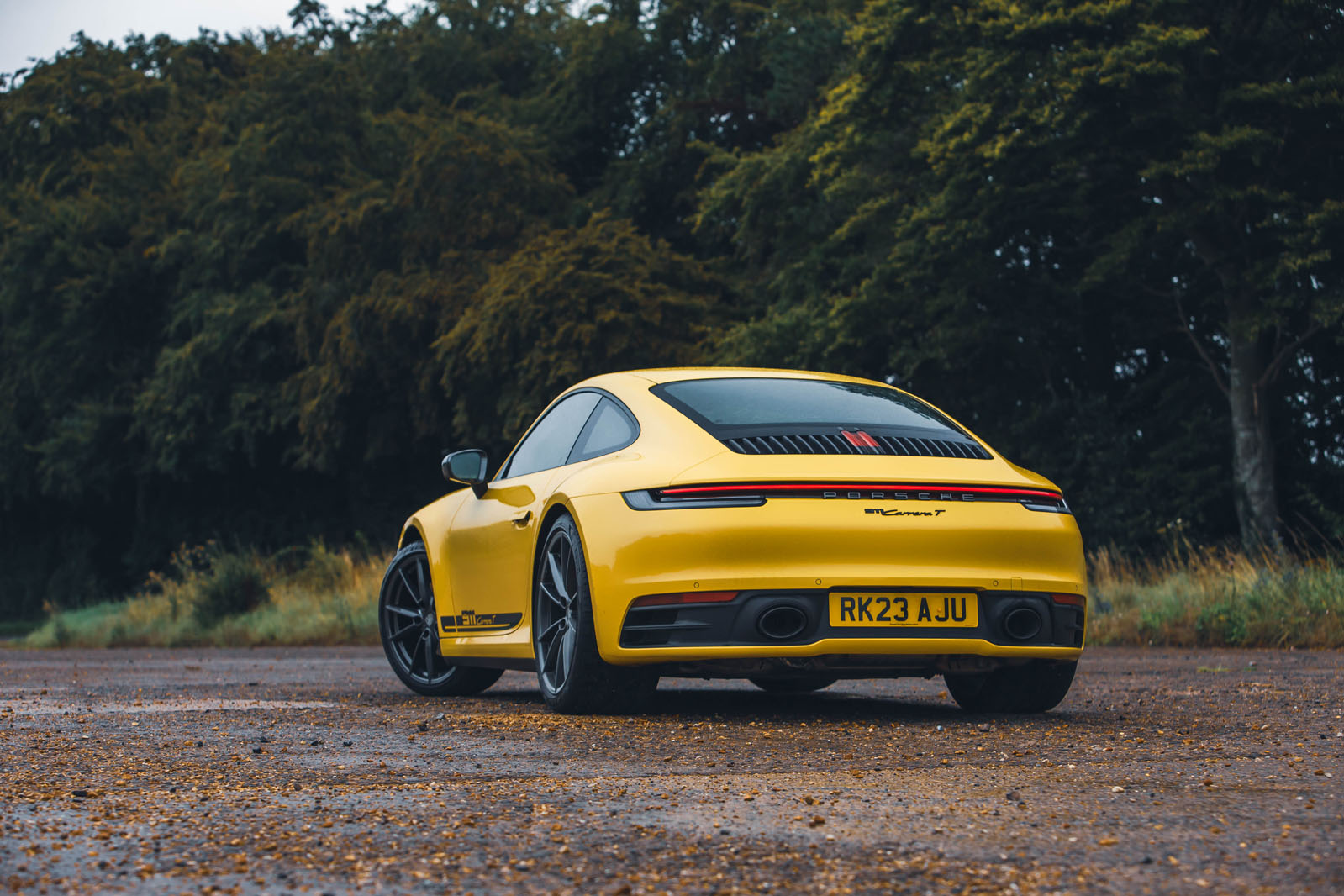It’s sobering to think there is now only one derivative of arguably the most revered sports car in the world – the Porsche 911 – that can be bought in the UK for less than £100,000.
This week’s test subject – the 911 Carrera T – isn’t quite that bottom-rung model, but it’s close. It represents Porsche returning to sprinkle some fresh intrigue on the more affordable end of the 911 range, between the launch of one quarter-million-pound special edition and the next.
Here, T stands for Touring, but ‘911 Lightweight’ would perhaps be a better descriptor for this car, since simplicity, weight-saving and driver appeal are what it is all about.
Slotting in between the standard Carrera and the well-established Carrera S, the T risked being a slightly wishy-washy, middle-of-the-road model without a clear raison d’être. But Porsche has given the car some special equipment features and quite an uncompromising character definition. There are, however, weight-saving measures employed with the last Carrera T that Porsche has chosen now to shun, and opportunities for the paring down of complexity and the enhancement of analogue feel that haven’t been taken.
Over the next few pages you’ll find out if the Carrera T really does have an identity of its own. Moreover, thanks to some unseasonably wet weather, we’ll also be able to explore just how much difference Porsche’s recently developed Wet driving mode makes to the performance of a 911 when the going gets slippery.
The Range at a Glance
| Engines | Power | From |
|---|---|---|
| Carrera | 380bhp | £99,070 |
| Carrera 4 | 380bhp | £105,070 |
| Carrera T | 380bhp | £107,770 |
| Carrera S | 444bhp | £112,070 |
| Carrera 4S | 444bhp | £118,070 |
| Carrera GTS | 473bhp | £124,070 |
| Carrera 4 GTS | 473bhp | £130,070 |
| Turbo | 573bhp | £161,520 |
| Turbo S | 641bhp | £183,020 |
| GT3 | 503bhp | £149,060 |
| GT3 RS | 518bhp | £195,260 |
| S/T | 518bhp | £234,260 |
Transmission: 6-spd manual, 7-spd manual*, 7-spd dual-clutch automatic


